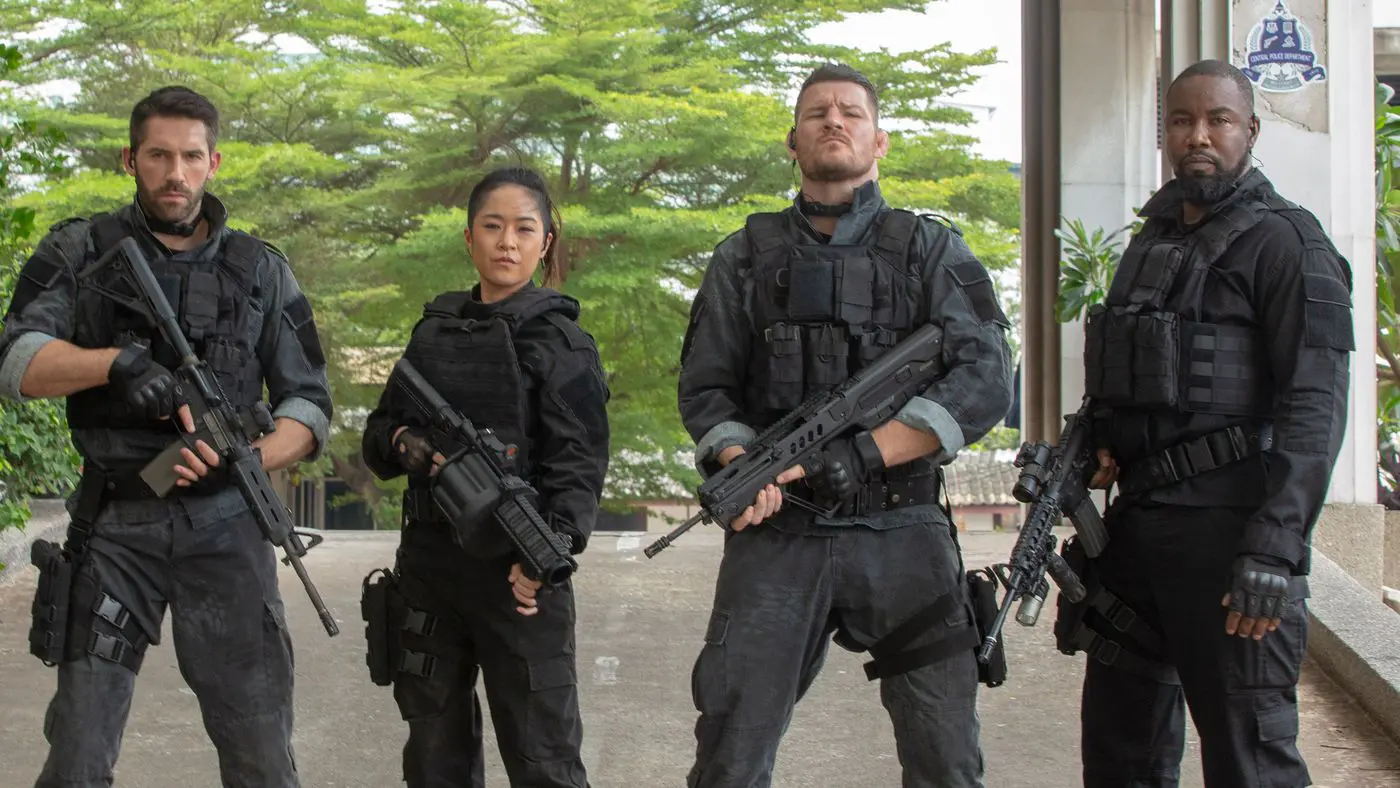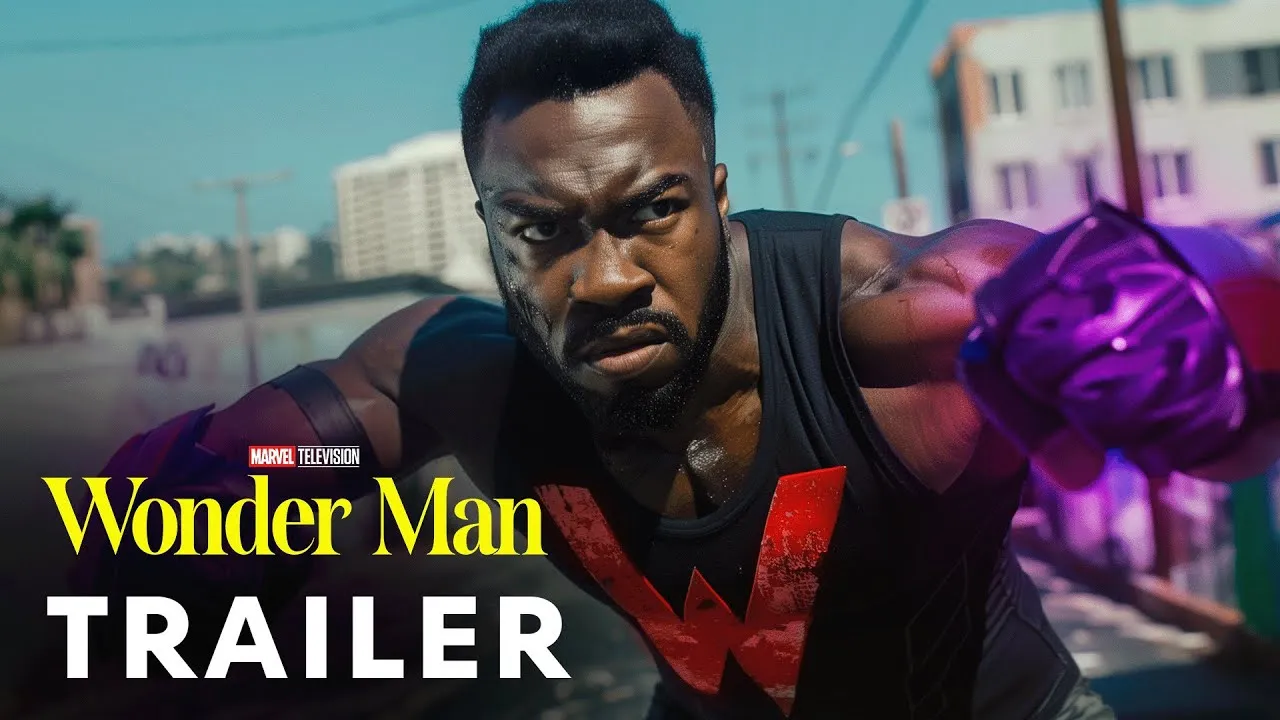In a cinematic age dominated by superheroes and CGI extravaganzas, Triple Threat (2019) feels like a throwback to classic action films — raw, fast, and gloriously physical. Directed by Jesse V. Johnson, this martial arts extravaganza brings together some of the biggest names in global action cinema, including Tony Jaa, Iko Uwais, and Tiger Chen, in a film that's less about complex storytelling and more about bone-crunching brawls and old-school stunt work.
Though the plot is paper-thin and the dialogue often serves as little more than scaffolding for the next fight, Triple Threat knows exactly what it is: a love letter to fans of brutal hand-to-hand combat, filled with martial arts legends at the top of their game.
The film kicks off with a bang as a team of mercenaries — including Payu (Tony Jaa) and Long Fei (Tiger Chen) — are tricked into helping free Collins (Scott Adkins), a ruthless criminal who promptly massacres everyone in his path, including the local villagers.
Realizing they've been used, Payu and Long Fei go into hiding. Meanwhile, Collins teams up with his fellow killers, including Devereaux (Michael Jai White) and Mook (Jeeja Yanin), to assassinate a Chinese billionaire’s daughter, Xian (Celina Jade), whose philanthropic mission to dismantle Southeast Asia's criminal syndicates has made her a target.
Enter Jaka (Iko Uwais), a former soldier with a personal vendetta against Collins and his crew. Circumstances force Payu, Long Fei, and Jaka into an uneasy alliance to protect Xian and stop the mercenary death squad from plunging the region into chaos.
Let’s be clear — the plot is not the selling point of Triple Threat. It’s simple, fast-moving, and filled with familiar tropes: revenge, betrayal, redemption, and one-liners between beatdowns. But the film’s real power lies in its cast of real-life martial artists, who are allowed to showcase their skills in extended, beautifully choreographed fight scenes.
That said, the film does just enough world-building to give context to the action. There’s a solid emotional throughline in Jaka’s revenge and Payu’s reluctant heroism. It’s not deep, but it’s enough to make the audience root for them when the fists start flying.
-
Tony Jaa is as graceful and powerful as ever, moving with the agility of a dancer and the impact of a wrecking ball. His blend of Muay Thai and stunt acrobatics is thrilling to watch, especially in one-on-one sequences.
-
Iko Uwais, best known for The Raid series, brings a darker edge to Jaka. His fights are more brutal and personal, reflecting his character's pain and determination. His scenes with Scott Adkins are among the film’s best.
-
Tiger Chen offers a more restrained, traditional martial arts style, balancing Jaa’s aggression and Uwais’s intensity. Together, the trio brings a unique rhythm to every battle — a literal and figurative triple threat.
-
Scott Adkins, as the main villain Collins, chews the scenery and breaks bones with equal skill. His final confrontation with the trio is brutal, long, and worth every second.
-
Supporting players like Michael Jai White and Jeeja Yanin round out a stacked cast of fighters, each getting their own moment to shine.

This is where Triple Threat truly delivers. The fight choreography is clean, fast, and refreshingly free of over-editing. Johnson allows his performers room to move, and the camera follows the flow of the fight rather than obscuring it with cuts and shaky cam.
Highlights include:
-
A jungle ambush filled with knives, traps, and gunplay.
-
A police station massacre turned into a tactical beatdown.
-
The climactic three-on-one showdown that feels like something out of a video game — but more painful.
These sequences are visceral, high-energy, and deeply satisfying for fans of real martial arts cinema. Every hit feels real. Every stunt is earned.
Shot on location in Thailand, Triple Threat looks gritty and grounded. The film's visual language reflects its stripped-down story — no gloss, just heat, sweat, and blood. Jesse V. Johnson, a former stuntman himself, understands that action should tell its own story, and he uses the camera to highlight performance, not hide behind effects.
The story, while serviceable, is riddled with clichés and thin character development. The dialogue is often wooden, and emotional arcs are barely sketched in. Some characters (especially Jeeja Yanin’s Mook) feel underused given their talent.

But if you're here for nuanced storytelling, you’re watching the wrong movie. Triple Threat is about motion, adrenaline, and spectacle, and in that, it more than delivers.
Triple Threat may not win awards for its screenplay, but for fans of martial arts cinema, it’s an absolute gift. It celebrates real skill, real stunts, and the timeless thrill of watching highly trained warriors clash without a green screen in sight.





